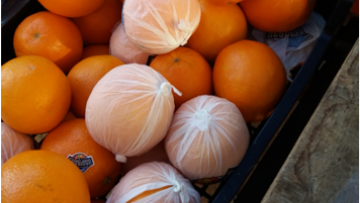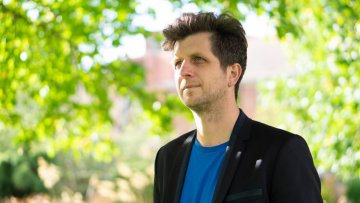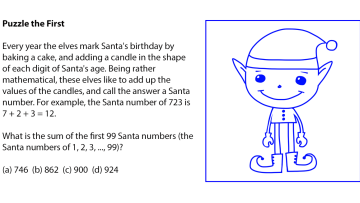14:00
Multigrid for climate- and weather prediction
Abstract
Climate- and weather prediction centres such as the Met Office rely on efficient numerical methods for simulating large scale atmospheric flow. One computational bottleneck in many models is the repeated solution of a large sparse system of linear equations. Preconditioning this system is particularly challenging for state-of-the-art discretisations, such as (mimetic) finite elements or Discontinuous Galerkin (DG) methods. In this talk I will present recent work on developing efficient multigrid preconditioners for practically relevant modelling codes. As reported in a REF2021 Industrial Impact Case Study, multigrid has already led to runtime savings of around 10%-15% for operational global forecasts with the Unified Model. Multigrid also shows superior performance in the Met Office next-generation LFRic model, which is based on a non-trivial finite element discretisation.
12:00
Anomalous boundaries of topological matter
Abstract
A topological insulator has anomalous boundary spectrum which completely fills up gaps in the bulk spectrum. This ``topologically protected’’ spectral property is a physical manifestation of coarse geometry and index theory ideas. Special examples involve spectral flow and gerbes, related to Hamiltonian anomalies, and they arise experimentally in quantum Hall systems, time-reversal invariant mod-2 insulators, and shallow-water waves.
12:00
Symmetry protected topological (SPT) phases of quasifree gapped ground states and coarse geometry
Abstract
Symmetry protected topological (SPT) phases have recently attracted a lot of
attention from physicists and mathematicians as a topological classification
scheme for gapped ground states. In this talk I will briefly introduce the
operator algebraic approach to SPT phases in the infinite-volume limit. In
particular, I will focus on the quasifree (free-fermionic) setting, where we
can adapt tools from algebraic quantum field theory to describe phases of
gapped ground states using K-homology and the coarse index.
Network Science provides generic tools to model and analyse systems in a broad range of disciplines, including biology, computer science and sociology. Renaud Lambiotte (pictured) teaches a 4th year undergraduate course on Networks and we are making the whole course available via our YouTube Channel. The first lecture is below with seven more to follow over the next few weeks.
There is no doubt about it, Santa is a mathematician. He must be, having every year to calculate the best way to get presents to so many homes in such a short space of time.
So in homage to such genius, we have two Santa themed puzzles for you to solve. You can find the answers at the bottom of the page (but try not to look too quickly).
15:30
Some applications of the geometry of surfaces to Biology
Abstract
Abstract: Almost everything we encounter in our 3-dimensional world is a surface - the outside of a solid object. Comparing the shapes of surfaces is, not surprisingly, a fundamental problem in both theoretical and applied mathematics. Results from the mathematical theory of surfaces are now being used to study objects such as bones, brain cortices, proteins and biomolecules. This talk will discuss recent joint work with Patrice Koehl that introduces a new metric on the space of Riemannian surfaces of genus-zero and some applications to biological surfaces.
15:30
The centres of String 2-groups
Abstract
Let $G$ be a compact connected Lie group and $k \in H^4(BG,\mathbb{Z})$ a cohomology class. The String 2-group $G_k$ is the central extension of $G$ by the smooth 2-group $BU(1)$ classified by $k$. It has a close relationship to the level $k$ extension of the loop group $LG$.
We will introduce smooth 2-groups and the associated notion of centre. We then compute this centre for the String 2-groups, leveraging the power of maximal tori familiar from classical Lie theory.
The centre turns out to recover the invertible positive energy representations of $LG$ at level $k$ (as long as we exclude factors of $E_8$ at level 2).




